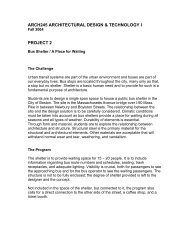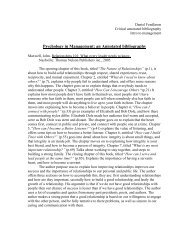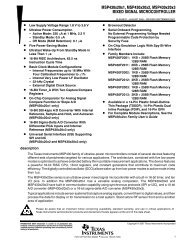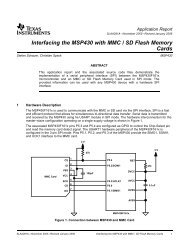Analog Circuit Design Laboratory Report - MyWeb at WIT ...
Analog Circuit Design Laboratory Report - MyWeb at WIT ...
Analog Circuit Design Laboratory Report - MyWeb at WIT ...
You also want an ePaper? Increase the reach of your titles
YUMPU automatically turns print PDFs into web optimized ePapers that Google loves.
ended output voltage Vo is equal the product of the open-loop gain and the differential<br />
voltage, Ed, between pins 2 and 3. The differential voltage, Ed, is equal to the positive<br />
input voltage minus the neg<strong>at</strong>ive input voltage and it controls the polarity of the output<br />
VO. When Ed is positive VO is positive, and when Ed is neg<strong>at</strong>ive VO is neg<strong>at</strong>ive.<br />
V = A E<br />
Eq. (3)<br />
O<br />
OL<br />
5<br />
d<br />
Ed = V ( + ) ⊥ −V<br />
( −)<br />
⊥<br />
Eq. (4)<br />
One function of the op-amp is as a voltage compar<strong>at</strong>or, see Figure 2.<br />
When an AC voltage source, Ei, is connected to the positive input, pin 3, the op-amp is<br />
working as a non-inverting voltage compar<strong>at</strong>or. If the neg<strong>at</strong>ive input, pin 2, is connected<br />
directly to ground, the reference voltage Vref is equal to 0V.<br />
Figure 2- Voltage Compar<strong>at</strong>or<br />
As Ei crosses Vref, going from positive to neg<strong>at</strong>ive, the polarity of VO reverses and<br />
VO changes from +Vs<strong>at</strong> to –Vs<strong>at</strong>. When Ei again crosses Vref, neg<strong>at</strong>ive to positive, VO goes<br />
from –Vs<strong>at</strong> to +Vs<strong>at</strong>. When the voltage source is connected to the neg<strong>at</strong>ive input, pin 2,
















